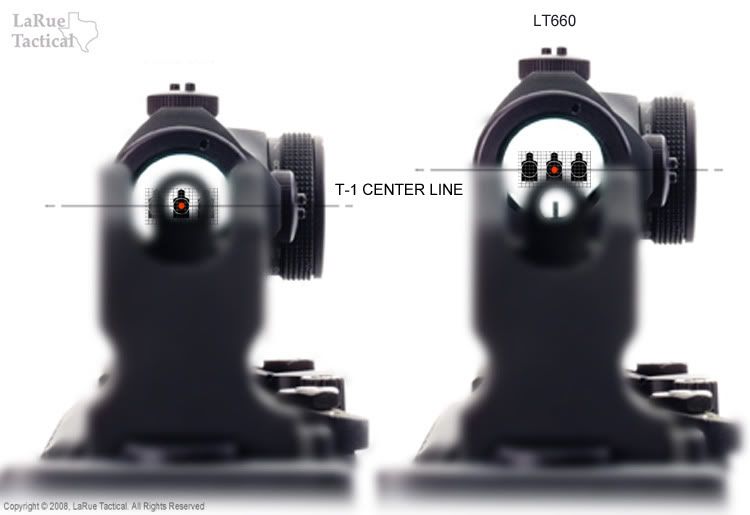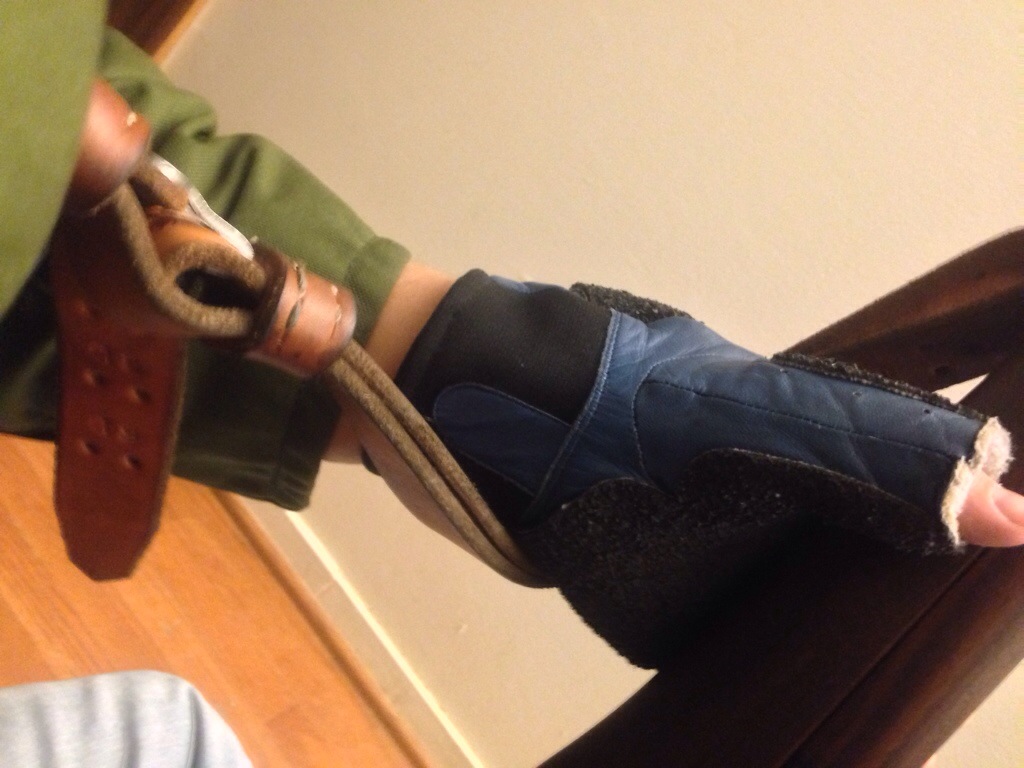The internet is full of speculation as to what the “best” co-witness is for your red dot and iron sights. Frankly there is no right answer, you have to decide what works best for what you are trying to do with your rifle.
First of all what is co-witness? Sights should always be co-witnessed, which means that the iron sights and the dot are zeroed at the same distance. Zero the irons, zero the dot and they should both point at the same place. The decision point is in determining if you prefer Absolute Co-witness or Lower 1/3. The choice really comes down to what optic mount height you chose, the irons will stay the same height.
Lower 1/3 Co-witness is just like it sounds, the iron sights (specifically the front sight) will be in the lower 1/3 of the optic. The idea behind this is the shooter can look over or flip down the rear sight and have a “less cluttered view” but, more on that later.

Absolute Co-Witness means the front sight is in the middle of the optic. The idea here is cheek weld is the same for both sighting methods. This is the method I prefer. As you can see below it is not as cluttered as some suggest.

I’ve gone a step further than most with absolute co-witness. As I am a believer in marksmanship with iron sights, I use a fixed rear sight in conjunction with an Aimpoint T1. I’m not a tactical trainer, but I like being able to keep my head in the same place to use both.
The LMT rear sight allows me to use the irons to shoot known distances using the elevation knob and the red dot allows me to acquire targets faster and shoot from weird positions. Best of both worlds in my humble opinion.
There are some things the shooter will need to “be smart” about with this set up.
1. For taking quick shot, use the dot. Don’t try and line up the irons.
2. Focus on the target if using the dot, focus on the front sight if using the irons.
3. Use the 0-2 aperture once the zero has been established, the smaller aperture is too slow for quick target acquisition. If there is time to dial in a known distance, there is time to flip the aperture to the small side.

Larue Tactical offers two very nice Aimpoint Micro mounts: the LT751 (absolute) and LT660 (lower 1/3). Both are solid mounts and they have a nice quick detach leaver and repeatable zero. See the mounts here.
They have an interesting picture that they use to try to make the case that with an absolute co-witness, part of the target will be blocked. Compared to the pictures above I’m not sure that is an honest description. The eye should be close enough to the rear sight that it is almost entirely blurred out especially with the 0-2 aperture. Even with the shooters’ head all the way at the rear of the stock, the sight will not block the target as pictured below.
In my opinion, it all boils down to the user knowing when to line up the irons and when to rely on the red dot.

Picture linked from this thread http://beta.ar15.com/archive/topic.html?b=3&f=18&t=542595





















